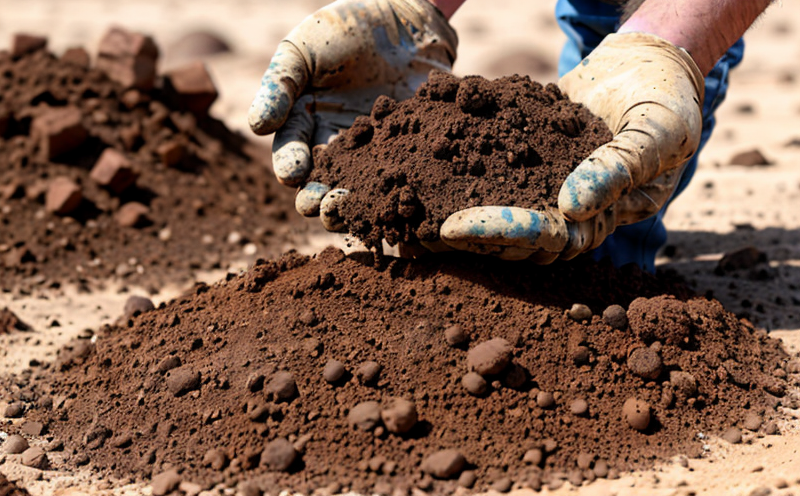ISO 17892 Part 8 Unconsolidated Undrained Triaxial Compression Testing
The ISO 17892-8 standard specifies procedures for unconsolidated undrained triaxial compression testing, which is crucial in characterizing the mechanical properties of soils and overburden materials commonly encountered during mining operations. This test method evaluates the shear strength and stress-strain behavior under confined conditions without consolidation prior to drainage. It provides valuable insights into the performance of these materials under dynamic loading conditions, making it a cornerstone for understanding their stability and potential failure modes.
The unconsolidated undrained triaxial test is particularly important in mining contexts where large-scale earthworks are conducted, and where the integrity and safety of excavations depend on accurate characterization of soil and overburden materials. The test helps in assessing the risk of landslides, settlements, and other geotechnical hazards associated with mining activities.
The testing procedure involves placing a cylindrical specimen within a triaxial cell under controlled stress conditions. The cell is then subjected to undrained shear tests where lateral confinement is maintained without allowing for drainage of pore water. This setup simulates the in-situ state, providing realistic data that can be used to predict material behavior during mining operations.
For quality managers and compliance officers, this test ensures adherence to regulatory standards and facilitates decision-making on site safety measures. R&D engineers benefit from its ability to provide detailed data for improving excavation techniques and designing safer structures. Procurement specialists find value in selecting materials that meet the stringent requirements of ISO 17892-8, ensuring long-term performance under mining conditions.
The test is especially relevant when dealing with cohesive soils like clay or silt, which have low permeability and are prone to shear failure under stress. Understanding their behavior is critical for preventing accidents during tunneling and shaft excavation in mines.
In summary, ISO 17892-8 unconsolidated undrained triaxial compression testing provides essential data that supports the design of safe mining operations and helps mitigate risks associated with geotechnical hazards. The test is a vital tool for ensuring the integrity and stability of mine sites.
Applied Standards
| Standard Code | Description |
|---|---|
| ISO 17892-8:2015 | Unconsolidated undrained triaxial compression testing of soils and overburden materials for mining applications. |
| ASTM D3963 | Standard test method for unconfined compressive strength of undisturbed soil specimens by direct shear in consolidated drained tests. |
Scope and Methodology
| Test Parameters | Values |
|---|---|
| Lateral pressure (σ3) | 0 to 5 MPa or as specified by the user. |
| Effective vertical stress (σ'v) | 0 to 10 MPa or as specified by the user. |
| Shear strain rate | 0.003/s ± 5%. |
The test is performed in a triaxial cell, where an undrained specimen is subjected to lateral confinement and vertical loading without allowing for drainage of pore water. The test setup includes a cylindrical specimen with a diameter of 76 mm and height-to-diameter ratio of 1:1. Specimen preparation involves excavation from the field or laboratory, ensuring that it retains its natural structure and properties.
The testing procedure begins by placing the specimen in the triaxial cell under specified lateral pressures to achieve undrained conditions. The vertical stress is then applied gradually up to the required level while maintaining constant lateral confinement. Shear failure occurs when the shear strength of the material cannot sustain the imposed stresses, resulting in a sudden drop in cell pressure.
The test results are reported as the peak undrained shear strength (Cu) and the corresponding effective vertical stress at failure (σ'v). These values provide critical data for assessing the stability and safety of mining operations. The methodology ensures consistency with international standards, facilitating comparison and acceptance across different jurisdictions.
Why Choose This Test
- Provides undrained shear strength data essential for geotechnical design.
- Simulates in-situ conditions to predict material behavior under mining stress.
- Helps identify potential risks of landslides and settlements during excavation.
- Ensures compliance with ISO 17892-8 standards, enhancing safety and reliability.
- Precise data for R&D in improving excavation techniques and structure design.
- Aids in selecting appropriate materials that meet stringent mining requirements.
- Facilitates accurate risk assessment and mitigation planning for mining sites.





